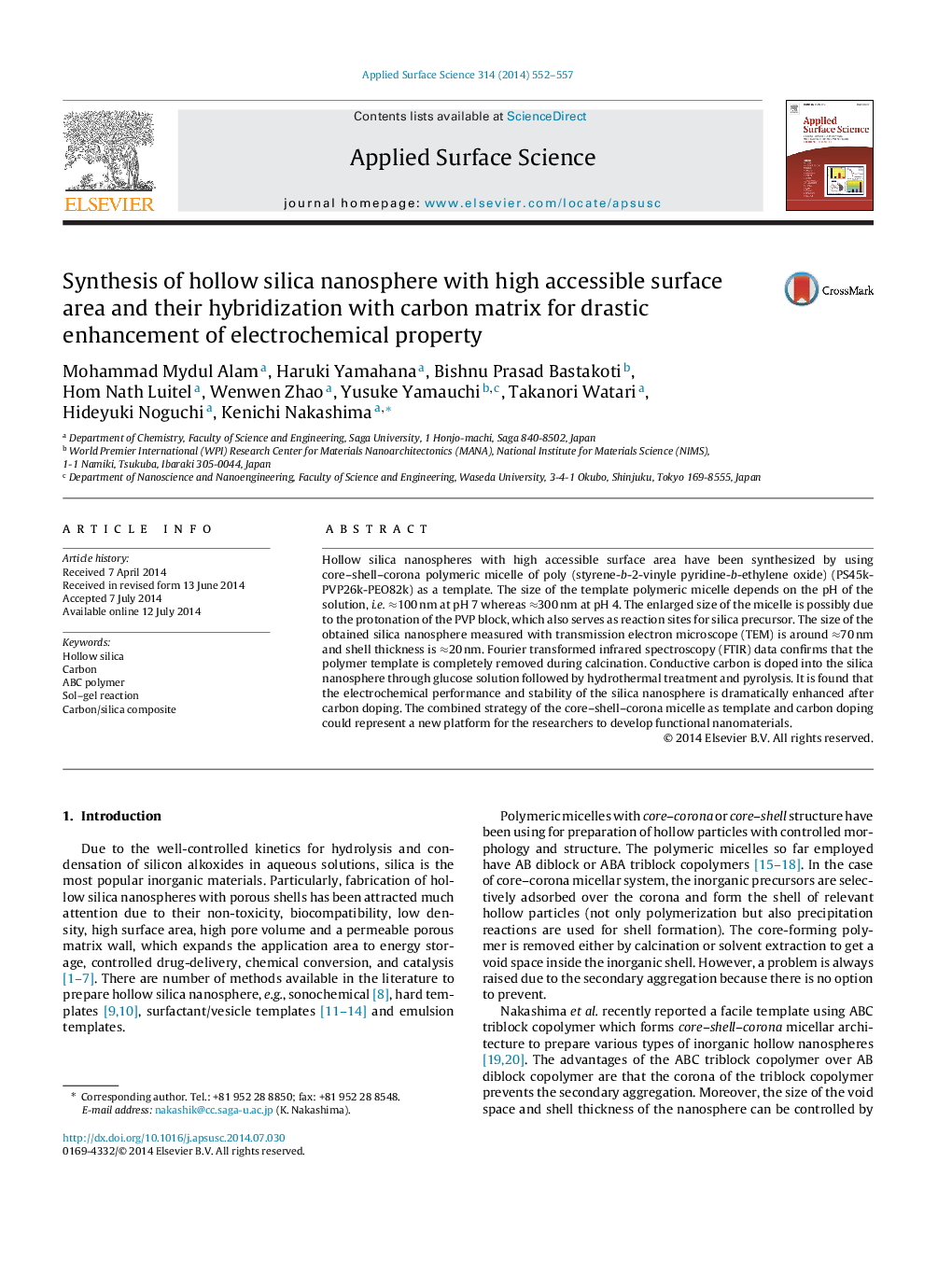| Article ID | Journal | Published Year | Pages | File Type |
|---|---|---|---|---|
| 5358397 | Applied Surface Science | 2014 | 6 Pages |
Abstract
Hollow silica nanospheres with high accessible surface area have been synthesized by using core-shell-corona polymeric micelle of poly (styrene-b-2-vinyle pyridine-b-ethylene oxide) (PS45k-PVP26k-PEO82k) as a template. The size of the template polymeric micelle depends on the pH of the solution, i.e. â100Â nm at pH 7 whereas â300Â nm at pH 4. The enlarged size of the micelle is possibly due to the protonation of the PVP block, which also serves as reaction sites for silica precursor. The size of the obtained silica nanosphere measured with transmission electron microscope (TEM) is around â70Â nm and shell thickness is â20Â nm. Fourier transformed infrared spectroscopy (FTIR) data confirms that the polymer template is completely removed during calcination. Conductive carbon is doped into the silica nanosphere through glucose solution followed by hydrothermal treatment and pyrolysis. It is found that the electrochemical performance and stability of the silica nanosphere is dramatically enhanced after carbon doping. The combined strategy of the core-shell-corona micelle as template and carbon doping could represent a new platform for the researchers to develop functional nanomaterials.
Keywords
Related Topics
Physical Sciences and Engineering
Chemistry
Physical and Theoretical Chemistry
Authors
Mohammad Mydul Alam, Haruki Yamahana, Bishnu Prasad Bastakoti, Hom Nath Luitel, Wenwen Zhao, Yusuke Yamauchi, Takanori Watari, Hideyuki Noguchi, Kenichi Nakashima,
